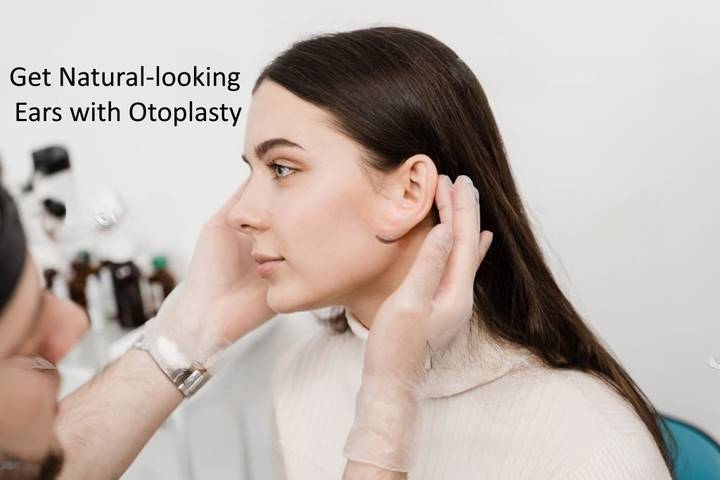If you’re gearing up for an otoplasty, the journey to reshaping your ears begins with the right preparation. In this guide, we’ll walk you through the ins and outs of getting ready for otoplasty, addressing common questions and concerns along the way.
How is Preparation for Otoplasty?
Getting ready for otoplasty involves a few essential steps to ensure a smooth and successful procedure:
-
Consultation is Key: Schedule a thorough consultation with your surgeon. Discuss your expectations, ask questions, and understand the details of the surgery.
-
Follow Pre-Surgical Instructions: Your surgeon will provide specific guidelines leading up to the surgery. This may include avoiding certain medications, quitting smoking, and adjusting your diet.
-
Arrange for Support: Plan for someone to accompany you on the day of the surgery and assist you during the initial recovery phase.
Is otoplasty a risk?
Like any surgery, otoplasty comes with its set of potential risks. However, with careful consideration and adherence to pre-surgical steps, these risks can be minimized. Common risks include:
-
Infection: While rare, there is a risk of infection. Following postoperative care instructions is crucial to prevent this complication.
-
Unsatisfactory Results: Communicate your expectations with your surgeon during the consultation to ensure realistic and satisfactory outcomes.
What are the requirements for Preparation for Otoplasty?
While there are no stringent requirements, a few considerations can make the process smoother:
-
Good Health: Ensure you’re in overall good health before undergoing otoplasty. Inform your surgeon of any existing health conditions.
-
Realistic Expectations: Have a clear understanding of what otoplasty can and cannot achieve. Realistic expectations contribute to a more positive experience.
Is otoplasty very painful?
Pain perception varies from person to person, but it’s normal to experience some discomfort after otoplasty. Your surgeon will prescribe pain medications to manage this. Following postoperative instructions, including proper rest and avoiding strenuous activities, will contribute to a more comfortable recovery.
Can otoplasty go wrong?
While otoplasty is generally safe, like any medical procedure, there is a potential for complications. Factors contributing to successful outcomes include:
-
Choosing a Skilled Surgeon: Research and select a board-certified surgeon with experience in otoplasty.
-
Communication is Key: Communicate your goals and concerns with your surgeon to minimize the risk of unsatisfactory results.
What is the failure rate of otoplasty?
The failure rate of otoplasty is relatively low when performed by a qualified and experienced surgeon. Selecting a skilled professional, following pre- and postoperative instructions diligently, and managing expectations contribute to a successful outcome.
Will people notice my otoplasty?
Initially, there may be some swelling and bruising, but as the healing progresses, these effects diminish. The goal of otoplasty is to enhance your natural appearance, not draw attention.

Most people won’t notice the surgery itself but will appreciate the positive change in your overall appearance.
In conclusion, getting ready for otoplasty involves a mix of practical steps and open communication with your surgeon. By following pre-surgical steps, addressing concerns about risks and outcomes, and maintaining realistic expectations, you’re setting the stage for a successful ear correction journey.
Remember, the key to a positive experience lies in informed decision-making and partnership with a skilled and understanding surgeon.
Recovery Essentials: Nurturing Your Newly Reshaped Ears
As you prepare for otoplasty, it’s crucial to understand the recovery process and how to care for your ears post-surgery. Here are essential steps to ensure a smooth recovery:
-
Follow Postoperative Instructions: Your surgeon will provide detailed instructions on caring for your ears after the procedure. This may include how to clean incisions, apply any prescribed ointments, and manage discomfort.
-
Rest and Relax: Give yourself the time you need to recover. Plan for a few days off work or daily activities to rest and allow your body to heal.
-
Avoid Strenuous Activities: Physical exertion and activities that could potentially impact your ears should be avoided during the initial recovery period. This helps minimize the risk of complications.
Emotional Well-being: Addressing Concerns About Appearance
Undergoing otoplasty can bring about emotional changes as well. It’s common to wonder how others will perceive the change in your ears. Here’s how to navigate the emotional aspects of the process:
-
Open Communication: Discuss your feelings and concerns with your surgeon during the consultation. A transparent conversation can help you manage expectations and address any anxieties.
-
Support System: Surround yourself with a supportive network of friends and family who understand your decision and offer encouragement throughout the process.
Long-Term Results: Sustaining the Benefits of Otoplasty
Otoplasty is a transformative journey, and the results can last a lifetime with proper care. Here’s how to maintain the benefits of your ear reshaping:
-
Follow-up Appointments: Attend all scheduled follow-up appointments with your surgeon to ensure that your ears are healing as expected.
-
Sun Protection: Protect your ears from prolonged sun exposure to prevent damage and maintain the integrity of the surgical results.
-
Healthy Lifestyle: Adopt a healthy lifestyle, including a balanced diet and regular exercise, to promote overall well-being, which contributes to the longevity of your otoplasty results.
Final Thoughts: Embracing Your Enhanced Appearance
Preparation for otoplasty involves more than just physical readiness; it encompasses emotional readiness and realistic expectations. By understanding the steps involved, addressing concerns, and committing to postoperative care, you set the stage for a positive and transformative experience.
Otoplasty isn’t just about changing your appearance; it’s about embracing a new version of yourself—one that aligns with your inner confidence and self-assurance. As you embark on this journey, remember that you’re not just reshaping your ears; you’re sculpting a newfound sense of self-assuredness and contentment.





